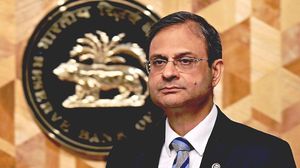Panama’s President José Raúl Mulino vehemently denied the U.S. State Department’s assertion this week, claiming his country had reached a groundbreaking agreement allowing U.S. warships to transit the Panama Canal without fees. The claim ignited tensions between the two nations, with Mulino labeling the U.S. statement as ‘based on a falsehood’ during his press conference.
On February 1, 2025, the State Department made the announcement through X, formerly known as Twitter, stating, "U.S. government vessels can now transit the Panama Canal without charge fees, saving the U.S. government millions of dollars a year." This proclamation immediately prompted pushback from Panama, as Mulino specified he had made it clear to U.S. Secretary of Defense Pete Hegseth the day prior, asserting he neither had the authority to set transit fees nor exempt anyone from them.
"I completely reject the statement yesterday," said Mulino, highlighting his surprise at the U.S. assertion. He took it upon himself to instruct Panama’s ambassador to Washington to formally dispute the claim with U.S. officials. The Panama Canal Authority (ACP), which oversees transit fees, quickly issued its own statement affirming, "We have not made any adjustments to the fees."
The relationship between Panama and the United States is historically fraught, especially surrounding the Panama Canal, which has always been strategically significant to U.S. military and commercial interests. According to the ACP, since 1998, U.S. warships have transited the canal approximately 994 times, representing only 0.3% of total traffic and generating about $25.4 million in toll fees. Charges for these U.S. warships depend on their displacement tonnage, diverging from how commercial vessels are taxed.
Secretary of State Marco Rubio, who visited Panama recently, echoed sentiments about the canal’s importance for U.S. strategic interests. He commented on the treaty obligations concerning the canal and criticized the idea of paying fees to transit what the U.S. is obligated to protect. He stated, "The United States has a treaty obligation to protect the Panama Canal if it...", emphasizing the U.S. military’s role therein.
Interestingly, Rubio conveyed President Donald Trump’s concerns about China’s influence over the canal area, which some U.S. officials claim pose strategic threats. Following their discussions, Rubio also highlighted the necessity of minimizing Chinese presence around the canal, which has been steadily growing. This meeting with Mulino was part of the broader U.S. strategy to regain leverage and control over the waterway, which had been handed over to Panama by the Carter administration after decades of U.S. dominance.
Returning to the financial assertions, Mulino defended the existing tolls, arguing they are manageable compared to the exaggerated figures often cited by critics. He underscored the principles of respect and transparency, expressing his desire not to manage bilateral relations based on 'lies and falsehoods'.
The current disputes also arrive as Panama recently submitted formal documents to exit China’s Belt and Road Initiative (BRI), signaling its intent to reorient its international partnerships. Although Mulino has dismissed claims of Chinese control over the canal, the U.S. remains vigilant toward any perceived geopolitical shifts.
Even as tensions rise, the ACP has stated its openness to discussions with U.S. authorities about moving U.S. vessels through the canal with priority, though nothing has indicated plans to waive any fees entirely. During this time, the bilateral dialogue is characterized by the balancing act of maintaining Panama’s sovereignty over its waterway, all the simultaneously acknowledging the U.S.'s historical ties and interests therein.
Mulino’s remarks assert similar themes of nationalism and pride around the canal’s management, as he continues to stress Panama's independence. "It’s about respecting our sovereignty; the control of the canal belongs to Panama and nothing will sway this," he iterated, illustrating the delicate fabric of diplomacy entwined within these exchanges.
Looking forward, both nations are aware of the importance the canal holds, not just financially but strategically for maritime navigation, especially for ships moving between Atlantic and Pacific waters. With climate factors affecting operations, including recent droughts and changing water levels, the canal’s sustainability remains integral to global trade routes.
With the U.S. importing more than 70% of its goods through the canal, the stakes remain high for both governments. Final decisions on transit fees could weigh heavily on future interactions and cooperation between Panama and the United States. The conversations initiated may pave the way for improved relations or could lead to escalated confrontations, depending on how both sides proceed.
Through it all, the Panama Canal continues to serve as more than just a passage for ships; it’s become emblematic of broader geopolitical dynamics at play, where nations maneuver to secure their interests, whether they be national or corporate.
Moving forward, the attention on whether U.S. military vessels will incur fees remains coupled with historical obligations and Panama's assertion of autonomy over its cultural and economic assets.



